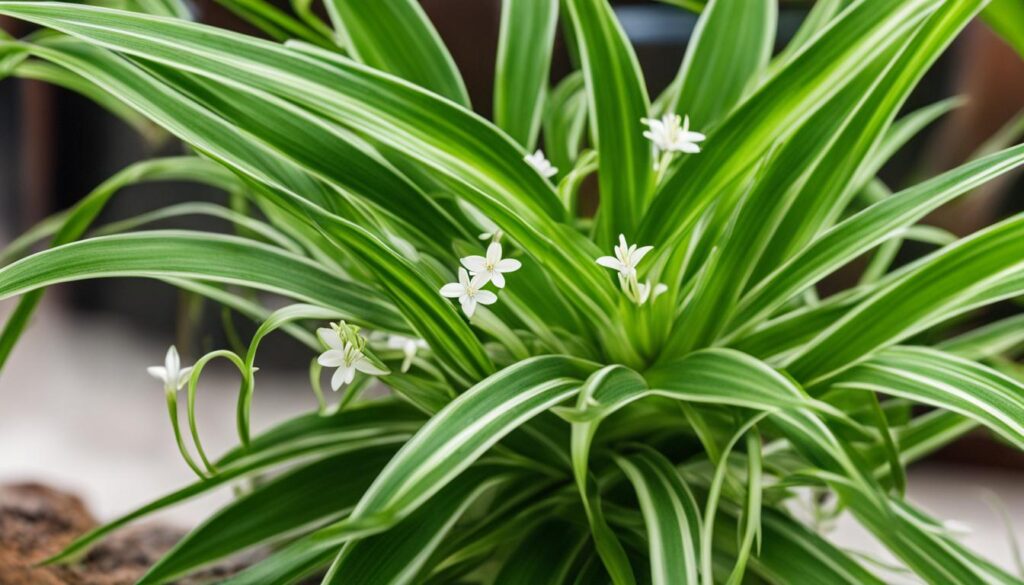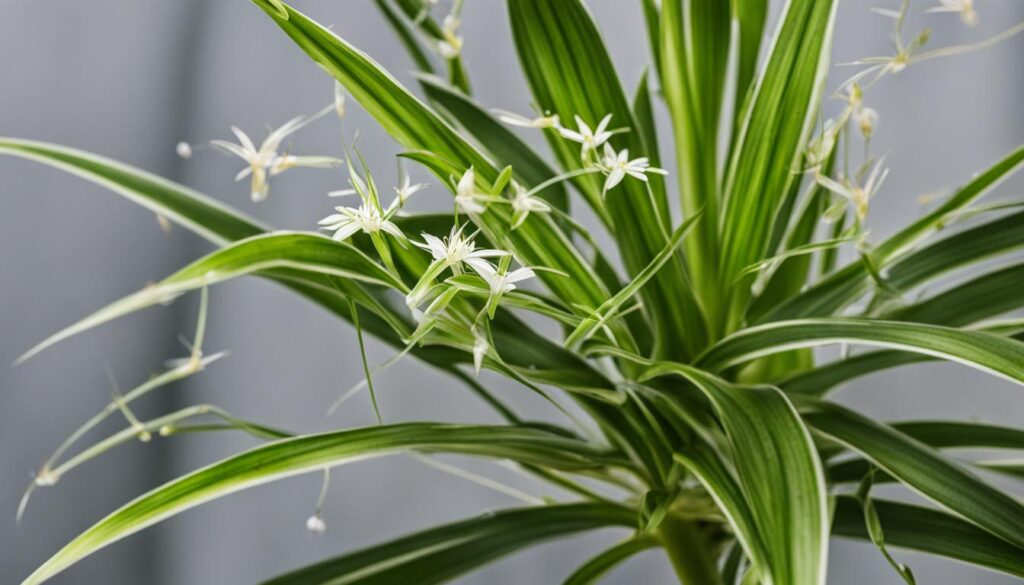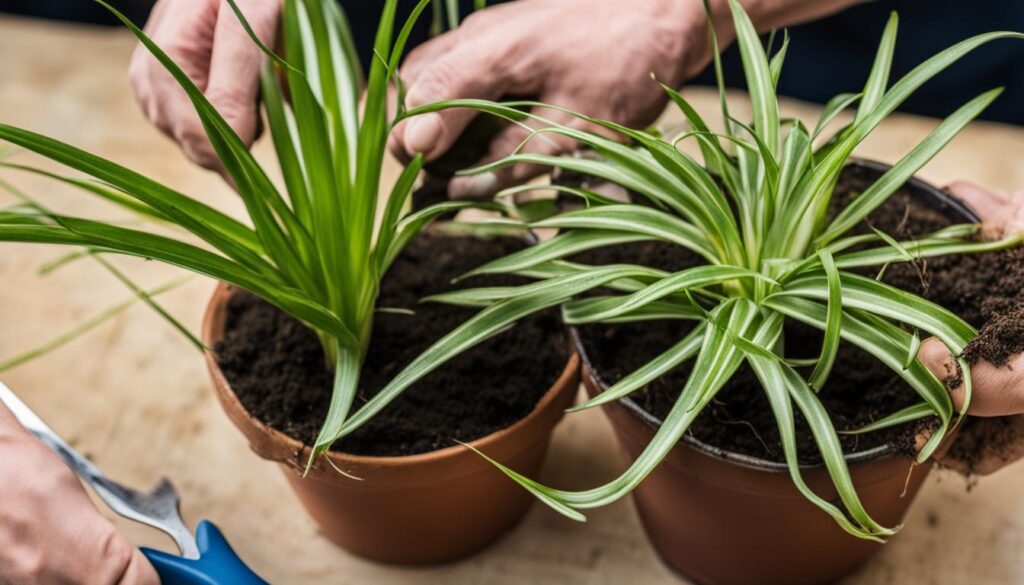Top Grow and Care Tips for Spider Plant, Baby Propagation, Pests, Treatments & Common Issues
The spider plant is an adaptable houseplant that is easy to care for. It produces clusters of ribbony leaves that can be solid green or variegated. Spider plants can grow in a wide range of conditions and are known for their resilience. Spider plants, scientifically known as Chlorophytum comosum, are some of the most popular and easy-to-care-for houseplants around. Their unique appearance and air-purifying qualities make them a fantastic addition to any home. Whether you’re a seasoned gardener or just starting out, here’s everything you need to know about caring for and growing spider plants.
Spider plants are generally free from pests and diseases, but can be susceptible to root rot if overwatered, and direct sunlight can burn the foliage. Propagation of spider plants can be done through the use of offsets, or spiderette, which can be rooted in water or soil and then planted as separate plants.
Repotting should be done when the plant outgrows its current container. Varieties of spider plants include Vittatum, Variegatum, Milky Way, White Stripe, and Mandaianum.

Key Takeaways:
- Spider plants are easy to care for and can be grown in a variety of conditions.
- They prefer well-drained soil and indirect light and should be watered when the soil has dried out.
- Propagation can be done through offsets, or spiderettes, which can be rooted in water or soil.
- Spider plants can be susceptible to root rot if overwatered or placed in direct sunlight.
- There are various varieties of spider plants, each with different colors and patterns.
Spider Plant Care and Watering
When it comes to caring for spider plants, simplicity is key. These resilient plants require minimal maintenance and can survive neglect to a certain extent. To ensure their health and vitality, it is important to pay attention to their care and watering needs.
Spider plants thrive in well-drained soil and prefer indirect light. It is best to allow the soil to dry out between waterings, as they are susceptible to root rot if overwatered. These plants can go for several weeks without water, but it is essential to strike a balance and avoid dehydration.
To maintain their optimal health, it is recommended to use rainwater or distilled water for watering spider plants. They are sensitive to the chemicals in fluoridated water, which can lead to leaf discoloration. Using an alternative water source can help prevent this issue.
| Spider Plant Care Tips | Spider Plant Watering Guidelines |
|---|---|
| Provide well-drained soil | Water when soil has dried out |
| Place in indirect light | Avoid overwatering |
| Use rainwater or distilled water | Avoid using fluoridated water |
Additionally, periodically leaching the plants by thoroughly watering can flush out any excess salts and prevent the browning of leaf tips. This practice helps maintain healthy and vibrant spider plants.

Spider Plant Temperature and Light Requirements
When it comes to the temperature and light requirements of spider plants, it’s important to provide them with the right conditions to thrive. Spider plants prefer cooler temperatures ranging from 55 to 65°F (13-18°C). Keeping them in this temperature range will ensure their optimal growth and overall health. However, they can tolerate slightly higher temperatures as well, ranging up to 80°F (27°C).
In terms of light, spider plants thrive in indirect light. They should be protected from direct sunlight, as it can burn their delicate foliage. Placing them in a shady spot may cause the variegation of their leaves to disappear. To maintain the vibrant colors and patterns of spider plant leaves, it’s best to provide them with bright, indirect light. A north-facing window or a few feet away from a south-facing window are ideal locations.
Remember, spider plants are adaptable and can tolerate a range of conditions, but providing them with the recommended temperature and light requirements will ensure they thrive and maintain their beautiful appearance.
| Temperature | Light |
|---|---|
| 55-65°F (13-18°C) | Bright, indirect light |
| Tolerates up to 80°F (27°C) | Avoid direct sunlight |
You can also read How To Save Dying Tulsi Plant
Spider Plant Varieties
If you’re looking to add some variety to your indoor garden, spider plants offer a range of cultivars and varieties. Each one has its own unique features that can add visual interest to any space. Here are some popular spider plant varieties: There are many different varieties of spider plants available. Some popular varieties include:
- Vittatum: The Vittatum variety of spider plants has pale green leaves with a central white stripe. This variegation creates a striking contrast and adds a touch of elegance to its appearance.
- Variegatum: The Variegatum spider plant boasts longer leaves trimmed in white. The white accents on the leaves create a bold contrast against the green, making it a visually appealing option for any indoor garden.
- Milky Way: The Milky Way variety features green bands on either side of each leaf and a broad white center. The combination of green and white gives it a vibrant and eye-catching look that can brighten up any space.
- White Stripe or Silver Stripe: The White Stripe spider plant has a thin pale line down the center of each leaf when young. As the plant matures, the white stripe becomes more prominent, creating a beautiful pattern that adds a touch of sophistication to any room.
- Mandaianum: The Mandaianum spider plant is a dwarf variety with dark green leaves and a canary-yellow stripe. Its compact size and vibrant yellow accent make it a charming addition to small spaces or as a tabletop plant.

Spider Plant Pests and Treatments
When it comes to spider plants, they are generally resilient and not prone to many pests or diseases. However, there are a few common pests that can affect them, including whiteflies, spider mites, scales, and aphids. These pesky critters can cause damage to the leaves and overall health of the plant if left untreated.
One effective method to combat these pests is to wash them off with a gentle spray of water from a hose. This will help to dislodge and remove them from the plant. Another option is to treat the affected areas with horticultural oil sprays, which can suffocate and kill the pests. It’s important to follow the instructions on the product label and apply the treatment as directed.
Pest Treatment Options
- Washing off with water: Gently spray the plant with water to dislodge and remove pests.
- Horticultural oil sprays: Treat affected areas with horticultural oil sprays to suffocate and kill pests.
Along with pests, spider plants can also develop tip burn, which is characterized by brown tips on the leaves. This can be caused by a few different factors, such as dry soil, low humidity, or a buildup of salt and chemicals in the water. To prevent tip burn, it’s important to keep the soil slightly moist by watering the plant regularly.
Additionally, using non-fluoridated or non-chlorinated water can help prevent the buildup of salts and chemicals in the soil. If tip burn does occur, simply trim off the brown tips to maintain the plant’s appearance. By taking these preventative measures and treating any issues promptly, you can keep your spider plant healthy and thriving.
| Pest | Treatment |
|---|---|
| Whiteflies | Wash off with water or treat with horticultural oil sprays |
| Spider mites | Wash off with water or treat with horticultural oil sprays |
| Scales | Wash off with water or treat with horticultural oil sprays |
| Aphids | Wash off with water or treat with horticultural oil sprays |
Common Issues with Spider Plants
As much as spider plants are known for their resilience and adaptability, they can still face some common issues that every plant enthusiast should be aware of. Understanding these issues and their causes can help you keep your spider plants healthy and thriving.
| Common Issues | Causes | Solutions |
|---|---|---|
| Browning of leaf tips | Fluoride in water leading to salt buildup | Periodically leach the plant with thorough watering |
| Overwatering and root rot | Excessive watering leading to suffocated roots | Allow soil to dry out between waterings |
| Inadequate light | Insufficient light resulting in yellowing leaves | Adjust placement to a brighter spot with indirect light |
Spider Plant Care in the UK
As a popular houseplant, the spider plant can also thrive in the United Kingdom. With its adaptability and low-maintenance nature, it can be grown both indoors and outdoors during the summer months. To ensure the well-being of your spider plant, it is essential to provide the right care and conditions. It is important to protect them from frost, especially during the colder months.
| Spider Plant Care in the UK | Key Points |
|---|---|
| Temperature | 55-80°F (13-27°C) |
| Light Requirements | Bright spot with indirect light |
| Watering | Allow soil to dry out between waterings, use rainwater or distilled water |
Spider Plant Propagation Methods
One of the great advantages of spider plants is their ability to easily propagate and produce new plants. There are several methods you can use to propagate spider plants and expand your collection.
Spiderette (Baby spider plants)
One common method is by using the offsets, also known as spiderettes, that the plant naturally produces. These baby spider plants grow on long stems and can be rooted in water or soil before being planted as separate plants. Another method involves cutting off the spiderettes and placing them directly in a pot of soil, providing the necessary water and light for growth. Over time, these spiderettes will develop roots and grow into new plants.
To propagate spider plants using offsets, start by allowing the spiderette to remain attached to the mother plant or placing it in a pot of soil near the mother plant. This allows the baby plant to continue drawing nutrients from the mother while developing its own roots. Once the spiderette has rooted and established itself, it can be cut off and grown as a separate plant. Alternatively, the spiderette can be cut off and placed directly in a pot of soil, ensuring it receives proper care and attention as it develops.
| Propagation Method | Description |
|---|---|
| Rooting in Water | – Place the spiderette in a container filled with water – Change the water every few days to prevent stagnation – Wait for roots to develop – Plant the spiderette in soil once roots appear |
| Direct Planting | – Cut off the spiderette from the mother plant – Plant the spiderette directly into a pot of soil – Water regularly and provide adequate light – Monitor the plant as it develops and grows |
Division:
To propagate a spider plant by division, simply divide the plant into two or more sections. Each section should have at least one healthy root. Plant the divisions in separate pots and water them well.
Air layering:
To propagate a spider plant by air layering, make a cut in the stem of the plant and insert a piece of moist sphagnum moss. Wrap the moss with plastic wrap and secure it with a rubber band. The moss will help to keep the stem moist and encourage new roots to form. Once the roots have formed, you can cut the new plant away from the mother plant and plant it in a pot.
The process of propagating spider plants is not only a fun and rewarding experience but also allows you to expand your indoor garden without having to purchase new plants. It’s an easy and cost-effective way to create a lush and vibrant environment in your home or office. Whether you choose to root the spiderettes in water or soil, both methods can lead to successful propagation and the growth of healthy spider plant offspring.
Spider Plant Repotting
Repotting spider plants is an essential part of their care routine to ensure they have enough space for their roots to grow and thrive. It is recommended to repot spider plants when their large, fleshy roots start to push the plant out of the pot. This can result in cracked containers or difficulty in watering the plant properly. Repotting not only provides more room for the roots but also replenishes the soil, ensuring the plant has access to the nutrients it needs for healthy growth.
When repotting a spider plant, it is important to select a container that is slightly larger than the current one. For established plants, a container about an inch wider is appropriate. Choose a pot with good drainage holes to prevent the roots from sitting in excess water, which can lead to root rot. It is also crucial to use well-draining soil that allows excess moisture to escape.

It is worth noting that when repotting spider plant offsets or spiderettes, it is best to start with a small container and gradually move to a larger one as the plant grows. This allows the young plant to establish its roots and adjust to the new pot size.
| Signs It’s Time to Repot | Benefits of Repotting |
|---|---|
| – Roots pushing the plant out of the pot | – Provides more space for root growth |
| – Cracked pot due to root overcrowding | – Refreshes the soil and replenishes nutrients |
| – Difficulty in watering properly | – Prevents root rot by improving drainage |
What are the benefits of a spider plant?
Spider plants are not only beautiful, but they also have many benefits.
- They are known for their air-purifying ability and have been highlighted by NASA for this property.
- They are also said to be good for reducing stress and anxiety.
- In addition to their air-purifying qualities, spider plants add greenery and visual appeal to any room with their trailing foliage.
- One of the remarkable benefits of spider plants is that they are non-toxic, making them safe for pets and children.
- Lastly, spider plants are incredibly low-maintenance and easy to propagate, making them an excellent choice for both beginners and experienced indoor gardeners.
FAQ
Should I cut the brown tips off my spider plant?
Yes, trimming brown tips is a good idea. It improves the overall appearance of the plant and helps it redirect energy toward healthy growth.
What temperature and light conditions do spider plants prefer?
Spider plants prefer cooler temperatures ranging from 55 to 65°F (13-18°C). They thrive in indirect light and should be protected from direct sunlight, which can burn their foliage. They can tolerate some shade but will do best in a bright spot with indirect light.
How to prune spider plants?
Pruning is not necessary for spider plants, but this will help your plant look healthier and encourage new growth. Pruning your spider plant is simple. Just trim off any yellow or brown leaves at the base of the plant using clean scissors or pruning shears.
Where to grow a spider plant indoor or outdoor?
Spider plants can be grown indoors or outdoors. They prefer bright, indirect light, but they can tolerate some direct sunlight. If you are growing them indoors, they will do well in a room with a south-facing window. If you are growing them outdoors, they can be planted in a garden or in a container.
Should I remove spider plant babies?
You can remove spider plant babies if you want to keep your plant compact or if you want to propagate new plants. Otherwise, leave them attached for a fuller appearance.
How do I treat pests on my spider plant?
Spider plants are generally resilient and not prone to many pests or diseases. However, they can be affected by whiteflies, spider mites, scales, and aphids. These pests can be washed off with a hose or treated with horticultural oil sprays.
What are common issues with spider plants?
Common issues with spider plants include browning of leaf tips, which can be caused by fluoride in the water. This can be alleviated by periodically leaching the plants with thorough watering. Overwatering can also cause root rot, and direct sunlight can burn the foliage.
How do I care for spider plants in the UK?
Spider plants can be grown successfully in the UK, both indoors and outdoors during the summer months. They prefer temperatures between 55 and 80°F (13-27°C) and can tolerate some shade. Watering should be done when the soil has dried out, and regular monitoring for pests and diseases is recommended.
What are the benefits of spider plants?
Spider plants are known for their air-purifying ability and can contribute to a healthier indoor environment by removing certain pollutants. They also add greenery and visual appeal to any room with their trailing foliage. Spider plants are non-toxic, making them safe for pets and children.




